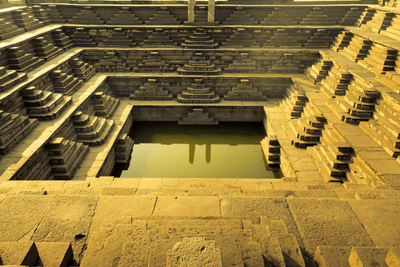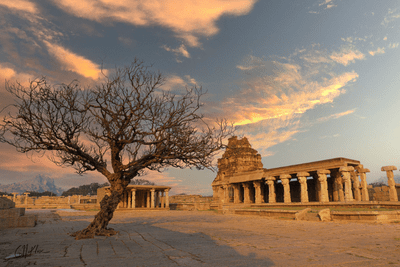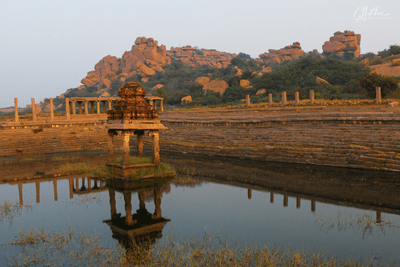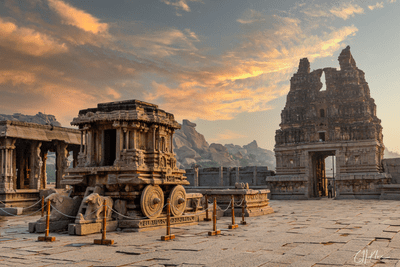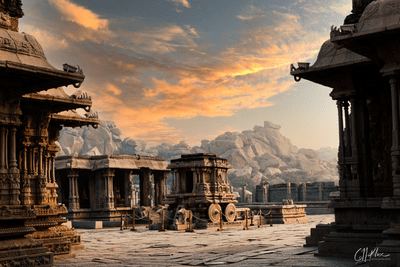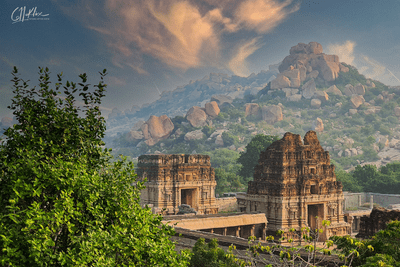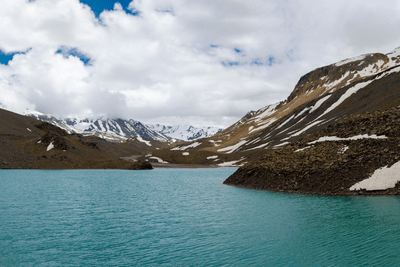Hampi & Badami
Duration
4D,3N
Overview
Hampi is a UNESCO World Heritage Site, owing to the ancient temples, forts and other monuments here. Hampi was the capital of the Vijayanagar Empire around 1500 AD, and by some accounts, the second largest city in the world at that time. Over the next centuries, it fell out of importance, and now there lie ruins of a lot of temples and other structures spread out over a vast area. The terrain around Hampi is as mysterious as the ruins themselves – the city is surrounded by boulders of different sizes, and you can climb to the top of them with a little effort to get a stunning view of the entire city and the geography. It is located on the banks of the Tungabhadra River. Famous for its massive, beautifully carved temples, Hampi tells the stories of its existing structures. Many a visitor climbs atop the Matangaparvata and gets a glimpse of Hampi and its environs. The way the city was built with temples and bazaars is exemplary in itself. On the North banks of the river, Tungabhadra is the first capital of the Vijayanagar Empire, Anegundi, the temples and stories abound, which will help one to get a better understanding of the local heritage.Located in a valley of rugged red sandstone, surrounding the Agastya Lake, Badami is an archaeological delight owing to its beautifully crafted sandstone cave temples, fortresses and carvings. It is home to a number of examples of Dravidian architecture which sustains and enhances instances of both South and North Indian style of architecture. One can see the silent imprints that history has left behind all around the area. Visit the fascinating cave temples carved out of sandstone rocks. The set of four cave temples was built over a period of time and three of them are dedicated to Hindu deities. The fourth cave temple is devoted to Jainism. The temples are connected to each other by flights of stairs.
Included/Exclude
- A/c Accommodation on twin sharing basis with Daily Breakfast(Only 1 B/F).
- AC car for all the transfers and local sightseeing as per the given itinerary.
- Well-experienced and bilingual driver till the departure.
- All the expenses related to the vehicle (toll, tax, parking, permits, driver batta, etc).
- Hotel Check-in at 12 pm and check-out at 10 am.
- The driver is only available as per the program given above.
- All the applicable taxes.
- No hidden costs.
- The packages do not include Volvo bus tickets.
- Guide charges, entry fees, Camera Charges, Massages, Elephant Safaris, Personal expenses like laundry, tips and telephone calls, Optional Tours, Travel Insurance, etc.
- Optional activities are mentioned in the itinerary & anything not mentioned in the above package.
- In case of payment made by cr card or debit card service charge of 2.5% and 1% will be charged extra.
Tour Amenities
Tour Plan
Duration
4D,3N


